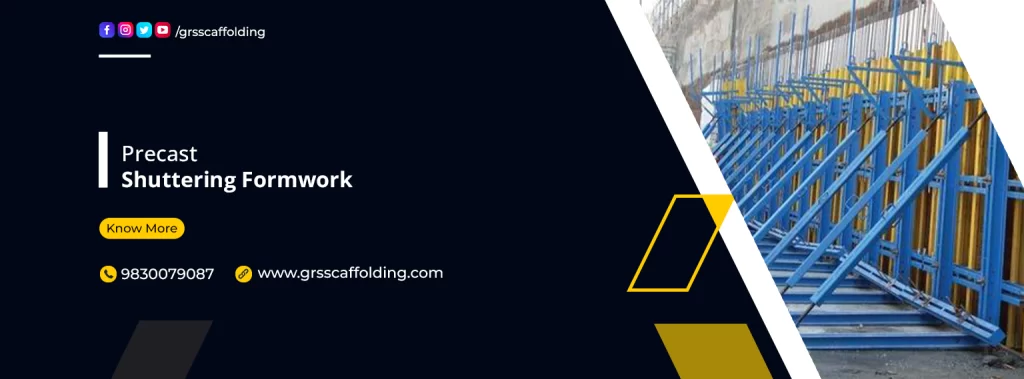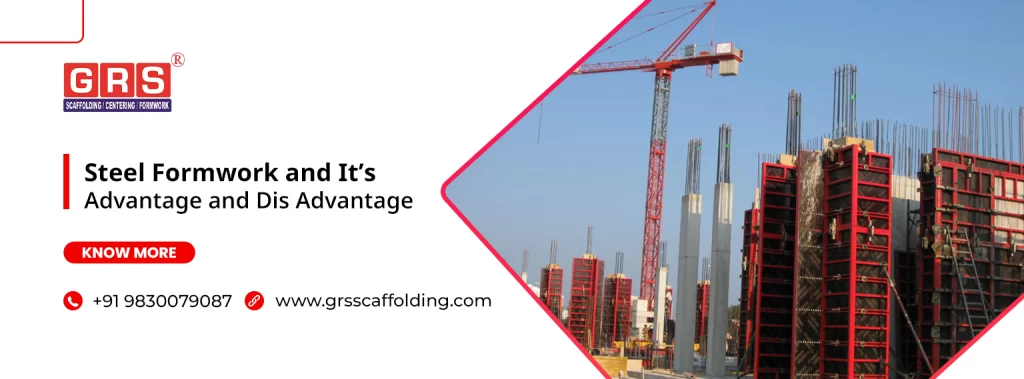Scaffolding is a crucial component in construction and maintenance work, providing a safe and stable platform for workers to access elevated areas.
With various types of scaffolds available, choosing the right one for your project can significantly impact safety, efficiency, and cost.
In this guide, we’ll explore the three main types of scaffolds and help you determine which is best suited for your needs.
1. Supported Scaffolds:
Supported scaffolds are a fundamental type of scaffolding used extensively in construction and maintenance projects. These scaffolds consist of a platform supported by a stable framework of vertical and horizontal components, including poles, frames, and outriggers.
As a leading scaffolding manufacturer, we ensure that our supported scaffolds are built with high-quality materials to provide a secure working surface elevated above ground level.
Supported scaffolds are highly valued for their stability, making them ideal for tasks that require a solid and dependable base. They are versatile and can be customized to accommodate various heights and configurations, which makes them suitable for a wide range of applications, from building construction and painting to repair and maintenance of large structures.
Additionally, supported scaffolds are generally cost-effective and easy to assemble, offering a reliable solution for both indoor and outdoor projects.
Components:
- Frames: Vertical and horizontal components that form the main structure.
- Planks: Platforms where workers stand and perform their tasks.
- Braces: Stabilize the frame to prevent swaying.
Advantages:
- Stability: Provides a solid base, reducing the risk of collapse.
- Versatility: Can be adapted to various heights and configurations.
- Cost-Effective: Generally less expensive than other types of scaffolds.
Ideal Uses:
- Building construction
- Painting and plastering
- Repair and maintenance work on large structures
Considerations:
- Requires a solid foundation to support the structure.
- Limited mobility as the scaffold is fixed to the ground.
2. Suspended Scaffolds:
Suspended scaffolds are a versatile and essential tool in construction and maintenance projects, designed to provide access to elevated areas by hanging from overhead supports.
This type of scaffold consists of a platform suspended by ropes, cables, or other lifting mechanisms, allowing it to be adjusted easily to various heights.
Ideal for tasks such as facade work, high-rise building maintenance, and window washing, suspended scaffolds offer flexibility and convenience by enabling workers to reach difficult-to-access areas without extensive ground-based equipment.
They are particularly valuable in urban environments where ground space is limited or obstructed. However, ensuring the safety and stability of suspended scaffolds is crucial; they require careful installation, regular inspection, and compliance with safety regulations to prevent accidents. Overall, suspended scaffolds provide an effective solution for vertical work and complex building maintenance projects.
Components:
- Platform: The working surface suspended from the support.
- Cables or Ropes: Used to suspend and adjust the height of the scaffold.
- Support Structures: Anchored to the building or other overhead supports.
Advantages:
- Height Flexibility: Easily adjustable to reach different heights.
- Access to Narrow Spaces: Ideal for working on facades and other vertical surfaces.
- Minimal Ground Disruption: Suitable for areas where ground space is limited.
Ideal Uses:
- Building facades and windows
- High-rise construction
- Bridge and tower maintenance
Considerations:
- Requires careful installation and regular inspection to ensure safety.
- May not be suitable for all types of structures, especially those without suitable overhead supports.
3. Rolling Scaffolds:
Rolling scaffolds, also known as mobile scaffolds, are versatile and practical solutions for a wide range of construction and maintenance tasks. These scaffolds feature a sturdy platform mounted on wheels, allowing them to be easily moved from one location to another.
This mobility makes rolling scaffolds ideal for projects that require frequent repositioning or work in confined spaces. They are especially useful for indoor tasks such as painting, drywall installation, and electrical work, where flexibility and efficiency are crucial.
However, it’s important to ensure that rolling scaffolds are set up on a flat, even surface and are equipped with locking mechanisms to prevent movement during use.
With their ease of movement and compact design, rolling scaffolds offer an effective way to access elevated areas while minimizing the need for additional lifting equipment.
Components:
- Platform: The working area supported by a wheeled base.
- Wheels: Allow the scaffold to be moved from one location to another.
- Locking Mechanisms: Ensure stability when the scaffold is stationary.
Advantages:
- Mobility: Can be easily moved to different locations without disassembly.
- Efficiency: Reduces the need for additional lifting equipment.
- Compact: Suitable for indoor use and confined spaces.
Ideal Uses:
- Interior painting and drywall installation
- Electrical and plumbing work in buildings
- Short-term maintenance tasks
Considerations:
- Requires a flat and even surface to move safely.
- Limited height compared to other scaffold types.
Choosing The Right Scaffold for Your Project:
When deciding which type of scaffold is best for your project, consider the following factors:
- Project Scope: Assess the scale and requirements of your project. For large, stable constructions, supported scaffolds are ideal, while for high-rise or facade work, suspended scaffolds may be more appropriate.
- Height and Mobility Needs: Determine how high the work area is and how often you need to move the scaffold. Rolling scaffolds are great for projects requiring frequent repositioning.
- Site Conditions: Evaluate the ground and overhead conditions. Supported scaffolds need a stable base, while suspended scaffolds require suitable overhead supports.
- Safety Considerations: Ensure that the chosen scaffold type complies with safety regulations and provides a secure working environment.
By understanding the characteristics and applications of each type of scaffold, you can make an informed decision that enhances safety and efficiency for your project.
For more detailed guidance or to get started with your scaffold needs, contact our experts today!
Conclusion:
Choosing the right type of scaffolding is crucial for the success of your construction or maintenance project. Supported scaffolds, with their stable framework and customizable features, offer a dependable solution for a wide range of tasks.
As a trusted scaffolding manufacturer, we ensure that our supported scaffolds provide a secure and cost-effective platform for both indoor and outdoor use.
By understanding the different types of scaffolding available and selecting the one that best meets your needs, you can enhance safety and efficiency on your job site. For reliable scaffolding solutions, contact us to find the perfect fit for your project.



